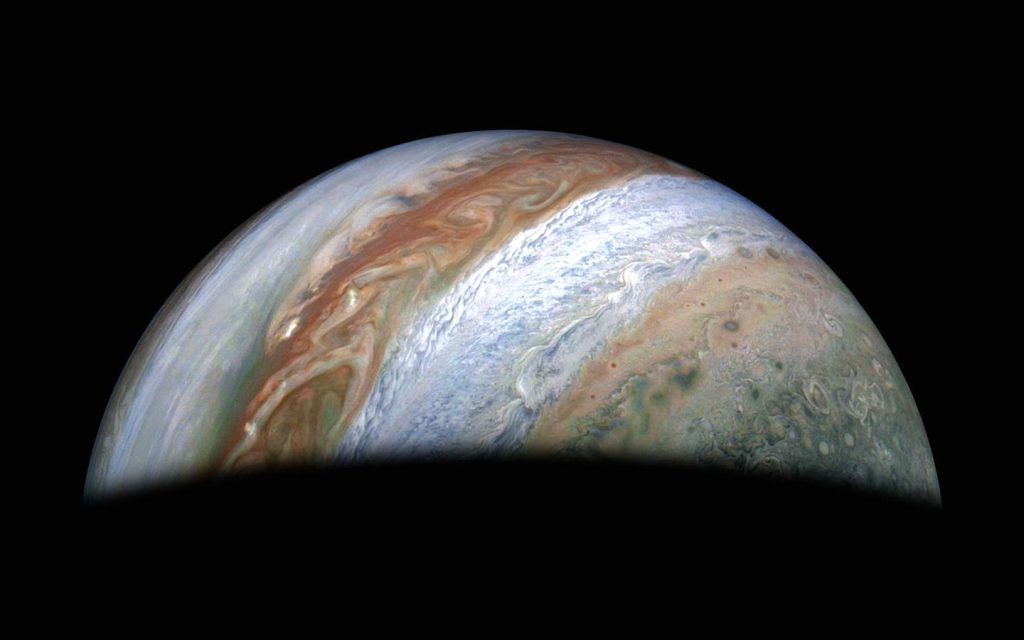NASA’s Juno spacecraft, currently in orbit around Jupiter, has recently sent back stunning images of the giant planet during a close pass of its polar regions. This comes just before Jupiter enters superior conjunction, where it passes behind the sun as seen from Earth. Juno orbits Jupiter in a highly elliptical path, only getting close to the planet for a few hours each month during a period called perijove. During these close passes, Juno’s camera is activated to capture images of Jupiter’s cloud tops.
Despite Juno’s camera being originally intended for outreach purposes rather than scientific research, it has been used to capture images of Jupiter’s moons in recent months. In particular, images of Europa, an ice-covered moon with a subsurface ocean, have been captured. Researchers have used Juno’s instruments to measure the amount of oxygen produced by Europa, with findings suggesting the moon generates 1,000 tons of oxygen every 24 hours. This oxygen production could potentially contribute to Europa’s habitability and support the existence of lifeforms on the moon.
Juno has also been imaging Jupiter’s innermost moon, Io, known for its volcanic activity. Recent images of Io, captured during close flybys within 930 miles of the moon’s surface, have provided new insights into Io’s geographical features, including mountains and a lake of cooling lava known as Loki Patera. Juno’s data on Io’s northern latitudes has been transformed into an animation, showcasing the moon’s volcanic activity in detail.
The next spacecraft missions to Jupiter, including NASA’s Europa Clipper and ESA’s JUpiter ICy moons Explorer (JUICE), will focus on studying Jupiter’s moons Europa, Callisto, and Ganymede. Juno itself was launched in 2011 and began orbiting Jupiter in 2016, equipped with 11 science instruments to study the Jovian system. The spacecraft’s mission is scheduled to end in 2025, concluding with a “death dive” into Jupiter during its 76th perijove.
With Juno’s 62nd perijove set for June 14, the spacecraft continues to provide valuable data and images of Jupiter and its moons. Future missions to Jupiter will further explore the potential habitability of Europa and other moons in the Jovian system. The recent images and discoveries made by Juno highlight the importance of continued exploration of our solar system, providing valuable insights into the nature of planets and moons beyond Earth.


